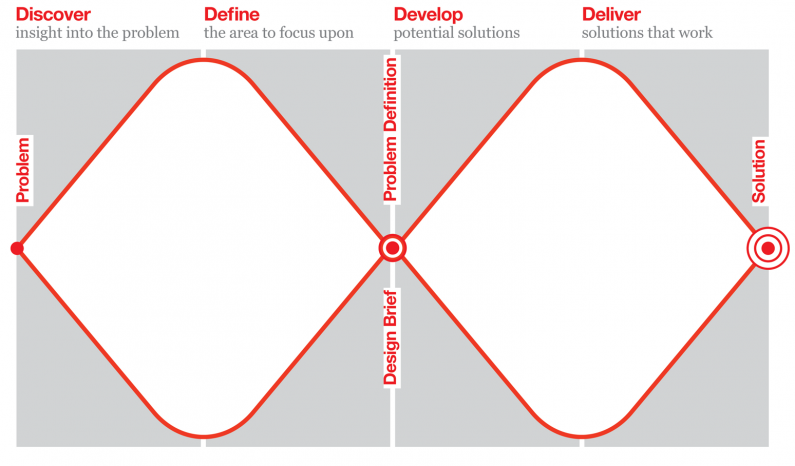What design thinking can teach politics
26th Sep 2017Yesterday talking about the German elections a question arose in my mind:
“how is it possible that in a country like Germany, with a not so easy past could give 12.6% of votes to the right-wing party?!”
This brings me back to a week while having a break in my hometown with two of my close friends from Hyper Island. We were talking about democracy, immigration and how policymakers interpret the mood of the citizens.
The discussion started from Brexit and I was questioning how young people could vote ‘Yes’ to such a proposal. I was pointed out as ‘the guy that doesn’t have empathy and cannot understand the people feelings and fears’.

Rapidly the conversation shifted to the parallel topic of “we don’t want immigration” and still, my point was quite clear, is not kicking out people or deny their access that would solve the problem (yes, the same as for Brexit, is not getting out of the EU that would solve the problem).
And yet again, I was pointed out as a person who can’t understand peoples feelings. This time I made my point clearer since I felt this accusation (of me not understanding people and their feeling) was not really true.
What are the needs of the citizen? And is “stopping immigration” the solution for this need?
My point is that politicians listen to what people say and not what people need. Just look at the rise of the populist party (Italy could be a good example for this) that scream whatever the people wanna listen to gain some new voters, leveraging over their fears without trying to get the roots of the discontent.
People say we don’t want immigrant because they steal our jobs, but what they really need is stability and some certainty for the future; and is it really ban immigrants the solution to these needs?
Understand what people really need, not just what they say.
One of the main principles of design thinking is to really understand people’s needs and through that get to the real problem to solve before starting ideation and generation of ideas.
There are several models that graphically describe the design thinking process; the one that I like to refer in this context is the ‘double diamond’ introduced in 2005 by the Design Council, as divide the process in two distinct phases for a total of four different stages: Discover, Define, Develop and Deliver.

The first diamond describes the process of investigating and define the problem through the discover and define stages. Once the problem is defined, the develop and deliver stages represent the process of idea generation, testing, and production.
The first block is what makes the difference because it aims to define the real problem understanding the people’s real needs. During the discovery stage, you need to deeply understand the users.
Tools like user interviews, shadowing, and experience mapping, serve as a way to acquire a deep understanding of the people needs, desires and their experiences, sometimes more than they actually know; the analysis of the research and insights during the define stage, head to the problems (or opportunities, as I prefer to call them) definition that can, in the second diamond, lead to the creation of innovation — products, services or systems — that will add value for the people that will actually use them.
The designer’s role is to be aware of the possible difficulties of the people to understand and express their needs and being able to capture them together with things they might not be aware of, in other words, their ‘latent needs’. That’s why is important to go beyond what people say.
Coming back to the topic: politicians and how they act.
So, what’s the point?
My feeling of what is missing out, is the deeply understanding of what people really need.
I think what some politicians are not so aware of the difficulties of the people to understand and express their needs; that should be one of the reasons why politicians tend to repeat what people say in order to reinforce their vision and fears and let them feel heard.
In the case of immigration, I don’t think that the real need of people is to kick out and ban children, families, young and old people that are coming from another country. The needs behind, is the of assurance about uncertainty of the future, to feel safe and heard, or, as Alexander Betts says in his TED talk, “the desire for people to take back control of their own lives and the feeling that they are unrepresented by politicians”; and these needs are independent on how many immigrants you get in or kick out, it’s something that the government should work together in order to solve the problem without populism and fast solutions.

So far, design thinking process was applied in the UK by the Government Digital Services for the government digital transformation of the public service system. Founded in 2011 by, GDS is part of the Cabinet Office that operates starting with user needs and one of the biggest examples of how digitalization of the public system could positively impact the life of million people.
In 2013, the Pirate Party Saarland Parliamentary Group explored “Design Thinking as a method of seizing suggestions from the population” through a one-day workshop. Even if it seems they have lost their influence looking at the yesterday’s results, they tried to let the citizens feel involved in the solution process.
As we can see, some government organizations are introducing design thinking process in their practice, but there is still a long way to go towards truly listening to people and reacting base on their needs.
I would love to see more initiatives that aim to deeply understand people needs, and the design thinking process taught in the EU parliament through workshops and more co-creation sessions with citizens.
All the posts
Taking snapshots of life
21st Apr 2024Berlin through a lens
5th Mar 2024On digital relationships
3rd Feb 2024A pathway to a raw and timely creation (and being)
21st Oct 2023Pragmatism VS Loose conversations in a remote work life
13th Feb 2021On diversity
24th Jul 2019What's reality?
5th Jul 2019What design thinking can teach politics
26th Sep 2017Now more than ever European Union must get together, starting from the language
11th Nov 2016My framework for everyday problems
15th Apr 2016Remote working: a long time relationship
16th Jun 2014Why it is better for a designer to know code (and vice versa)
18th May 2014